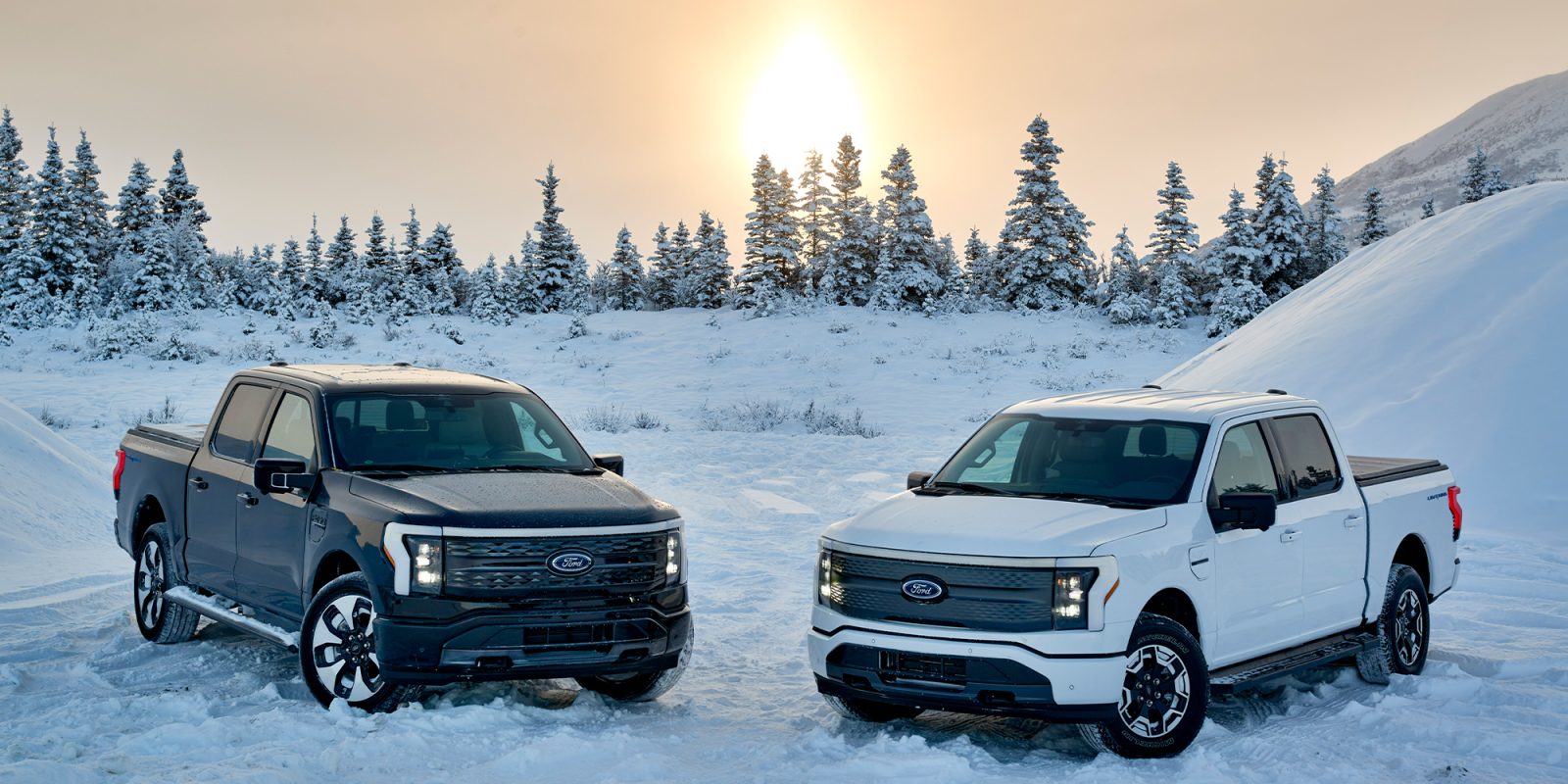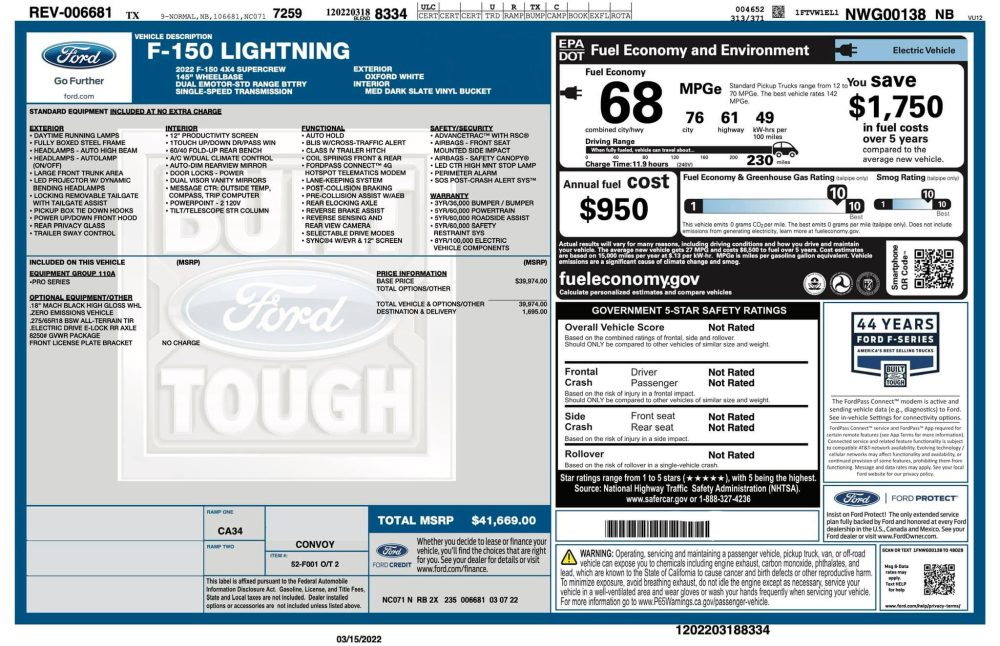
The base version of the Ford F-150 Lightning electric pickup, which starts at $40,000, has received an official EPA rating with an estimated range of 230 miles and 68 MPGe.
Ford is preparing to start production and deliveries of the F-150 Lightning, an electric pickup truck, to help accelerate the electrification of the massive segment of the auto industry in the US.
The automaker grabbed a lot of headlines by announcing that the Ford F-150 Lightning would start at $40,000, with a range of up to 300 miles. When the company opened up the F-150 Lightning configurator, we got a better idea of how the different options are going to work.
We found out that the base version at $40,000 gets an estimated range of 230 miles (370 km) on a single charge, but if you want the bigger battery pack with 300 miles of range, Ford makes you get a bunch of other options that brings the price up to $74,000.
Now, the EPA window sticker for the F-150 Lightning Standard Battery pack has leaked, and it shows that Ford achieved the expected range of 230 miles and it received an efficiency of 68 MPGe (via F150gen14):

The electric pickup is obviously much more efficient than any other gas-powered pickup truck on the market by a long shot, but how does it compare to the only other electric pickup with an EPA rating?
According to the EPA test cycle, the Rivian R1T is about 2-3% more efficient overall by using 48 kWh to travel 100 miles, versus 49 kWh for the F-150 Lightning:
- Rivian R1T combined efficiency: 70 MPGe
- Ford F-150 Lightning combined efficiency: 68 MPGe
Interestingly, the F-150 Lightning is a little more efficient than the R1T (76 vs 74 MPGe), but a lot less efficient on highways (61 vs 68 MPGe).
Electrek’s Take
This is a big win for Rivian, because the base version of the F-150 Lightning should be more efficient with its smaller and lighter battery pack than the R1T, which is currently only offered with a bigger battery pack that gets 314 miles of range.
However, the Lightning is longer than the R1T with a 10-inch longer wheelbase, but they are both similar in size otherwise. You would think that the much smaller battery pack would make a bigger difference, but apparently not.
But the good news is that they are both way more efficient than their gas-powered counterparts, and a lot of buyers are going to be looking their way if gas prices stay that high.
FTC: We use income earning auto affiliate links. More.





Comments